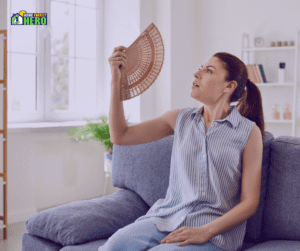
A Guide to Indoor Comfort
Tired of sticking to everything? It’s time to dehumidify! Humidity can turn your home from a sanctuary to a sticky, uncomfortable trap. As the temperature rises during summer, so does the moisture in the air. High humidity levels not only make you feel hotter and stickier but can also contribute to mold growth, respiratory problems, and damage to your belongings. Beat the heat and humidity by maintaining optimal humidity levels that are essential for a healthy and comfortable indoor environment.
Understanding Humidity
Humidity is essentially the measure of water vapor in the air. It’s that invisible, sticky feeling you experience on hot, summer days. While a certain amount of humidity is necessary for comfort, excessive levels can drastically impact indoor air quality. Ideal summer humidity typically ranges between 40 and 60 percent. Exceeding this range can create a breeding ground for mold and mildew, which not only damages your home but can also trigger respiratory issues such as allergies and asthma. The constant dampness can also lead to a musty odor, making your home unpleasant to be in.
Causes of Humidity in Homes
Several factors contribute to high indoor humidity. Everyday activities like showering, cooking, and dishwashing release water vapor into the air. Leaky appliances, such as dishwashers or refrigerators, can also introduce moisture. Beyond these internal sources, external conditions play a significant role. High outdoor humidity can easily seep into your home, especially if your air conditioning system isn’t working efficiently or if there are gaps in your home’s insulation.
Tips for Reducing Humidity
Proper ventilation is crucial, including opening windows when weather permits and using exhaust fans in bathrooms and kitchens to expel moisture-laden air. Dehumidifiers are powerful tools for removing excess moisture, especially in basements or rooms prone to dampness. Regular maintenance of appliances like dishwashers and refrigerators helps prevent leaks and condensation. Addressing the root of the problem is essential; fixing leaky pipes, roofs, or foundations issues can significantly reduce indoor humidity. Additionally, improving home insulation and balanced ducted airflow can help prevent outdoor humidity from seeping in. By combining these strategies, homeowners can create a healthier, more comfortable living space.
Conclusion
A home energy audit can be a game-changer to beat the heat and humidity. These assessments pinpoint the exact sources of moisture infiltration and energy loss in your home. By identifying issues like air leaks, inadequate insulation, or ventilation problems, an energy auditor can recommend targeted solutions. Whether it’s sealing up drafts, upgrading insulation, or improving ventilation, these improvements not only reduce energy consumption but also significantly impact indoor humidity levels, creating a healthier and more comfortable living space.
If you’re ready to schedule a home energy audit, please contact us.
